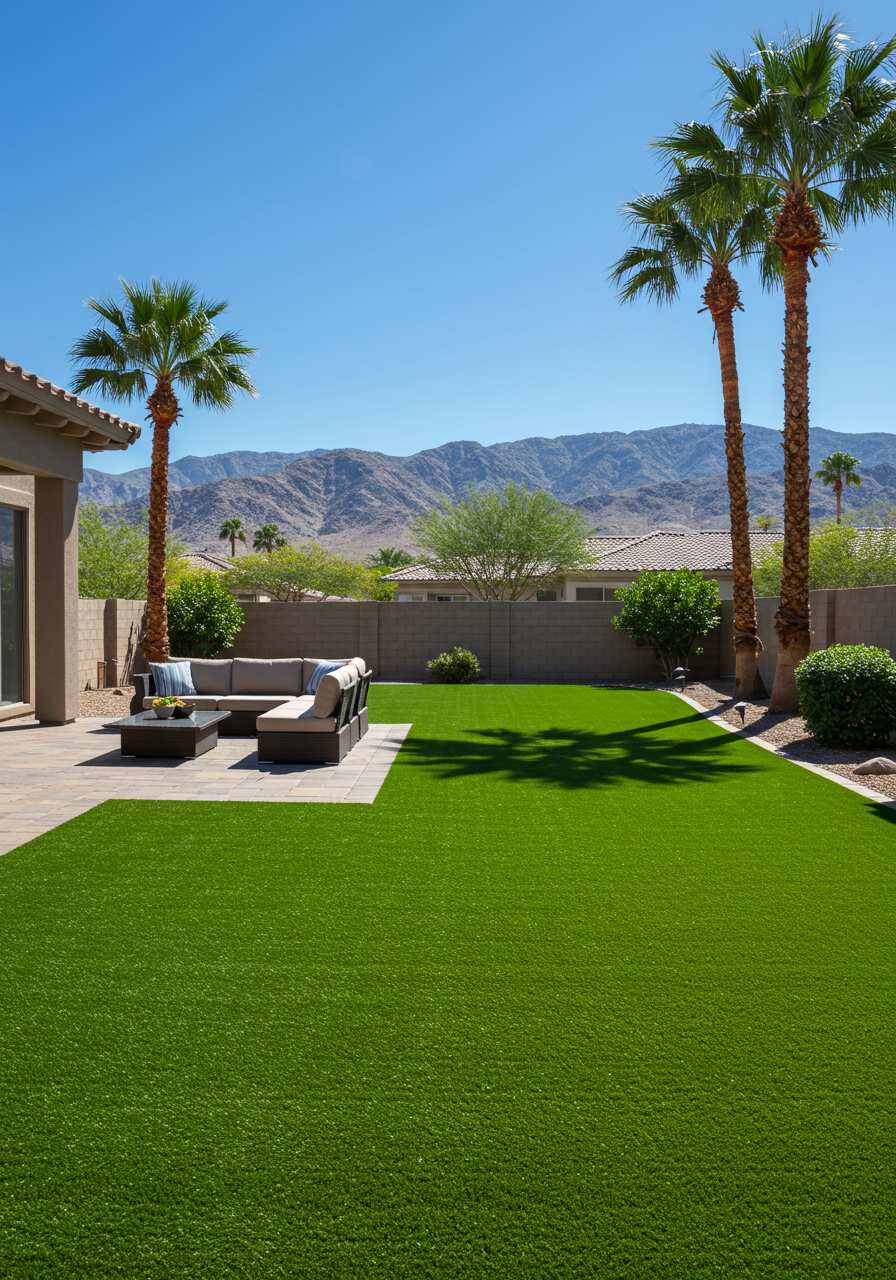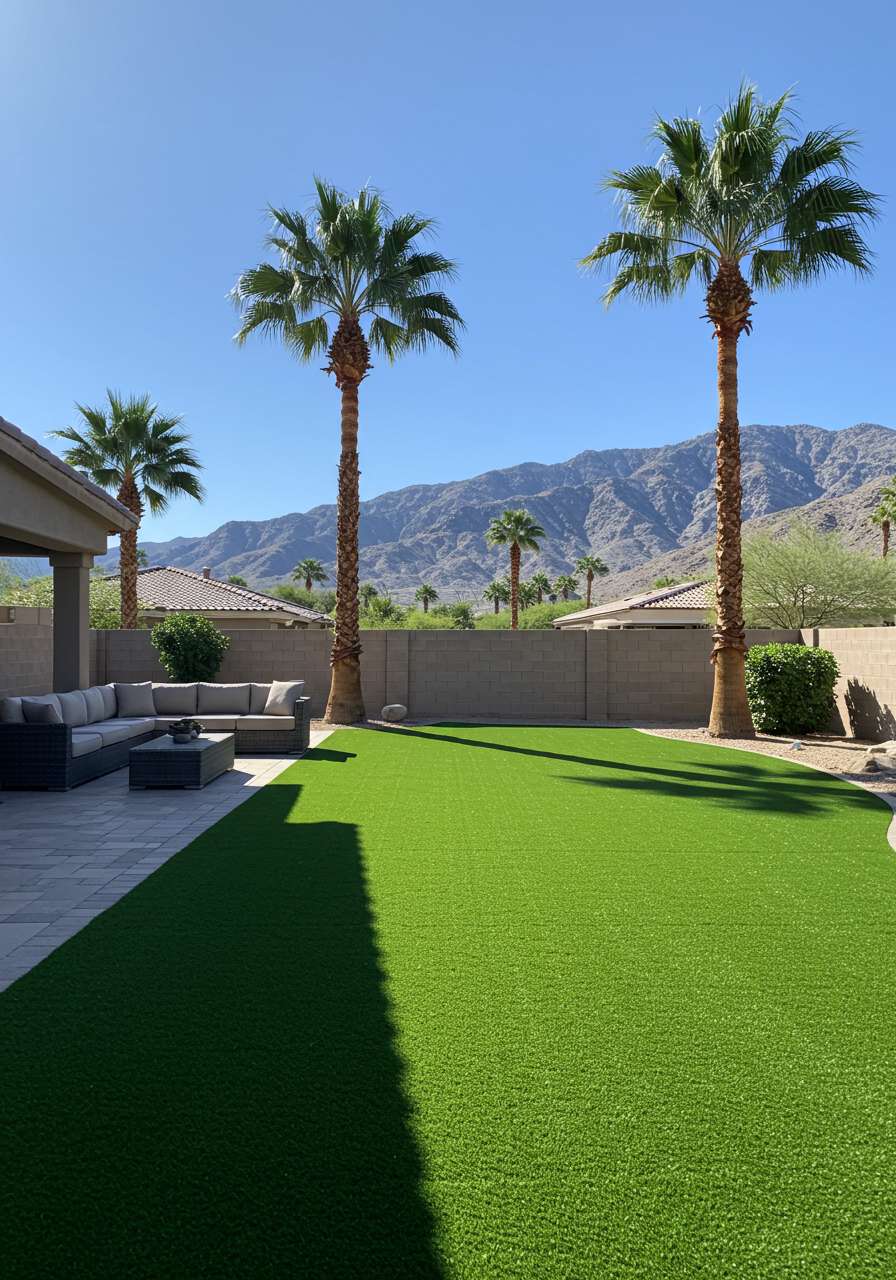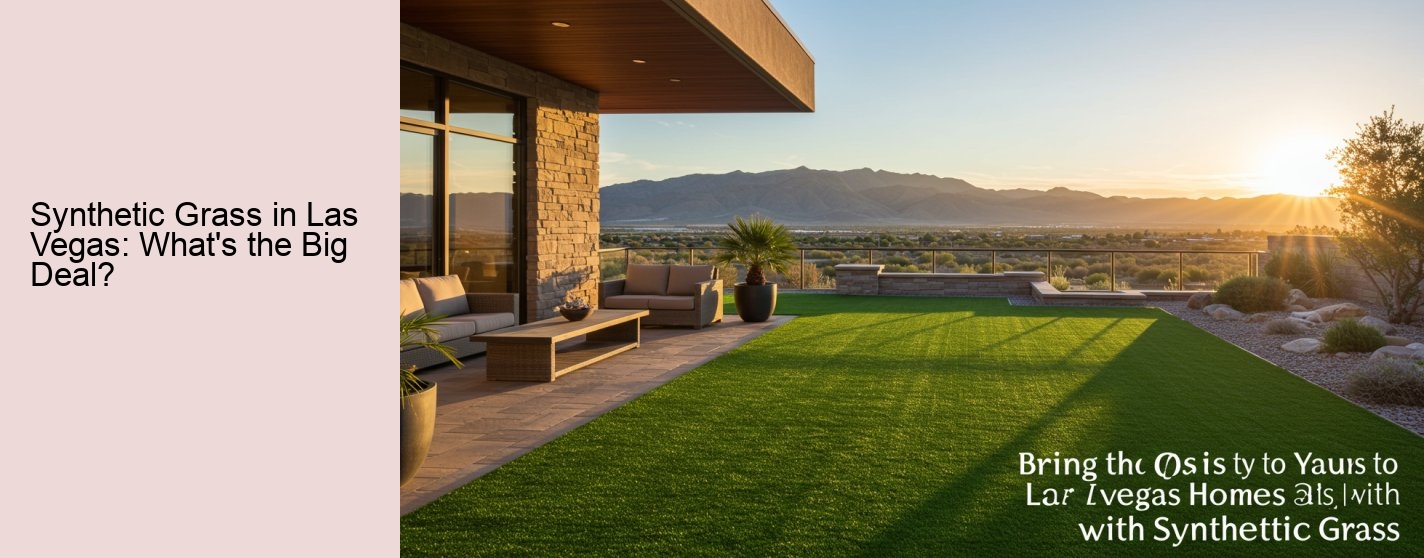Minimized Upkeep with Artificial Turf
Synthetic grass has been acquiring popularity amongst house owners in Las Vegas for its many benefits. Transform Your Garden with Las Vegas' Best Synthetic Grass . Among one of the most substantial benefits is the lowered maintenance requirement, that makes synthetic grass an easier and cost-efficient choice contrasted to all-natural yard.
Maintaining a natural grass lawn is typically a taxing and labor-intensive process. In the scorching warmth of Las Vegas, it ends up being even more complicated. The yard calls for normal watering, mowing, fertilizing, and weeding to remain healthy and aesthetically pleasing. If ignored, the turf begins to transform yellow or brown and might even pass away, which would certainly require reseeding or perhaps complete replacement of the yard.
On the various other hand, artificial turf virtually gets rid of these concerns. It stays perfectly eco-friendly and lush all the time, irrespective of the weather conditions. There is no need for regular watering, which not just saves time and effort but additionally adds to water conservation - a significant issue in locations like Las Vegas. The only water requirement would be periodic rinsing to keep it clean and dust-free.
Additionally, with artificial turf, there is no demand for trimming or feeding. It stays at the excellent height forever, and theres no threat of it overgrowing or harboring weeds. This not just decreases the moment spent on grass maintenance but also eliminates the price of buying and maintaining a lawnmower or buying plant foods.
Artificial turf is also a lot more long lasting and hard-wearing than all-natural yard. It can hold up against hefty foot website traffic and rigorous play tasks without obtaining worn out or harmed. This means you wont have to bother with replacing or fixing certain sections of your grass, which is an additional usual upkeep job with all-natural lawn.

The lowered maintenance demand with synthetic grass gives home owners in Las Las vega with even more time to appreciate their exterior spaces, instead of hanging out preserving them. It additionally implies significant cost savings in the long run. In a city like Las Vegas, where the environment is severe, artificial turf proves to be a smart and valuable option for property owners, supplying an evergreen, low-maintenance yard that looks similar to natural lawn.
Ecological Benefits of Switching to Synthetic Grass
As Las Vegas remains to experience the effects of a transforming environment and increasing water scarcity, it is coming to be crucial for citizens and organizations to discover ingenious means to preserve water. One such means is with the fostering of artificial turf or artificial turf. This option not only supplies aesthetic allure and reduced upkeep yet also brings significant ecological advantages.
Among one of the most noticeable ecological benefits of switching over to artificial turf is water preservation. Standard lawn lawns need a hefty amount of water to stay environment-friendly and healthy and balanced, specifically in the desert environment of Las Las vega. According to the Southern Nevada Water Authority, each square foot of all-natural turf changed by synthetic grass saves 55 gallons of water each year. For that reason, by changing to artificial turf, Las Vegas citizens can significantly decrease their water usage, which is crucial in a city where water is a priceless resource.
Synthetic grass likewise eliminates the demand for damaging chemicals and fertilizers. Many natural lawns require chemicals, plant foods, and herbicides to preserve their appearance and health. These substances commonly leak right into the ground, infecting the groundwater and influencing the neighborhood flora and animals negatively. With artificial turf, these chemicals are unnecessary, making it a more secure selection for the atmosphere.

Another substantial environmental advantage of synthetic grass is its sturdiness and durability. Unlike all-natural grass, artificial turf does not require reseeding or replacement due to weather adjustments. This longevity minimizes the resources made use of for the constant maintenance and substitute of all-natural yard.
In regards to air quality, man-made turf uses clear benefits also. Standard yards call for normal mowing, which launches contaminants into the environment. The U.S Epa notes that gas-powered lawn mowers add considerably to air pollution. With synthetic grass, no mowing is necessary, getting rid of these discharges completely.
Lastly, synthetic grass helps fight soil disintegration. In areas where the dirt is prone to erosion, specifically in desert environments like Las Vegas, synthetic grass can offer much-needed security. The backing material on synthetic grass assists keep soil in position, protecting against disintegration and advertising far better environmental wellness.
In conclusion, the button to synthetic grass in Las Las vega offers several environmental advantages. From water conservation to air quality improvement, synthetic grass shows to be a feasible, eco-friendly remedy, specifically in areas grappling with water shortage and climate adjustment. As Las Las vega homeowners continue to look for means to lessen their ecological impact, the fostering of synthetic grass will likely become a significantly popular option.

Convenience and Visual Allure of Synthetic Grass in Las Las Vega
Artificial turf, typically called artificial turf, has obtained tremendous appeal in the dry, desert city of Las Vegas. In a city where natural yard is challenging to expand and maintain because of water deficiency and severe warm, synthetic grass offers an eye-catching and flexible choice.
Synthetic Grass in Las Vegas: What's the Big Deal? -
- Las Vegas allergy friendly turf
- Las Vegas custom lawn turf: tailored, textured, totally terrific.
Lets begin by going over the convenience of synthetic grass. Among the primary advantages of artificial turf is that it can be set up anywhere, regardless of the environment or surface. This is particularly beneficial in Las Las vega, where the setting is not conducive to the development of all-natural lawn. Synthetic grass can be set up on roofs, patios, around pool locations, canine runs, sports fields, and play areas, among others. It is additionally a favorite selection for golf links and bowling eco-friendlies as a result of its also, smooth surface. This adaptability indicates you can have a lavish, eco-friendly lawn throughout the year, irrespective of the weather or water limitations.
One more significant benefit of synthetic grass is its aesthetic appeal. Unlike natural lawn, synthetic grass remains vibrant and green throughout the year, enhancing the look of your home or business. It provides a clean, neatly polished appearance that is hard to attain with all-natural yard, specifically in a desert environment. The artificial turf readily available today is developed to look and feel like actual grass, making it virtually identical from the actual thing. In addition, it does not discolor under sunlight or turn brownish throughout droughts, guaranteeing your lawn looks eye-catching and welcoming in any way times.
Furthermore, artificial turf can be tailored to match your specific requirements.
Synthetic Grass in Las Vegas: What's the Big Deal? - artificial grass sports fields Las Vegas
- Las Vegas pet turf installation
- Artificial turf Las Vegas brings the lush lawn look without the lawnmower battles.
- synthetic grass landscaping Las Vegas
- Las Vegas zero maintenance grass
To conclude, the adaptability and visual allure of synthetic grass make it a superb option for homes and businesses in Las Vegas. Not just does it offer a useful, low-maintenance option to natural lawn, however it likewise boosts the appearance of your residential or commercial property, making it much more appealing and welcoming. So, if youre thinking about upgrading your exterior space, artificial turf can be the best service.
Durability and Toughness: How Synthetic Grass Outlives All-natural Grass
When it involves the long life and toughness of grass, artificial turf plainly outperforms its natural equivalent. This is especially evident in a city like Las Vegas, where the harsh desert climate can ruin all-natural lawns. In comparison, artificial turf remains dynamic and lush all year round, irrespective of climate condition. This essay looks for to highlight how artificial turf outlasts natural lawn, thus making it one of the leading benefits of using artificial turf in Las Vegas.
Natural grass requires a great deal of maintenance to maintain it looking fresh and environment-friendly. It needs routine watering, mowing, fertilizing, and re-seeding.
Synthetic Grass in Las Vegas: What's the Big Deal? -
- Las Vegas turf installers near me
- Las Vegas fake turf for rooftops
On the various other hand, synthetic grass, also called synthetic grass, uses superior toughness and longevity. It is made from top notch, resilient products that can stand up to heavy foot website traffic, extreme heat, and other extreme problems.
Synthetic Grass in Las Vegas: What's the Big Deal? - Indoor turf in Las Vegas: for gyms, garages, and people who hate slippers.
- Residential turf in Spring Valley: making lawns look perfect since yesterday.
- home artificial turf Las Vegas
- residential turf contractor Las Vegas
One more essential aspect that contributes to the long life of synthetic grass is its resistance to pests and diseases. Unlike natural yard, synthetic grass does not give a habitat for pests, neither does it struggle with common grass diseases. This removes the need for chemicals and fungicides, lowering both maintenance prices and environmental influence.
Additionally, synthetic grass does not require sprinkling to stay eco-friendly. This is a significant benefit in a desert city like Las Vegas, where water is a precious source.
Synthetic Grass in Las Vegas: What's the Big Deal? - Fake grass for balconies in Las Vegas gives your high-rise a high-end lawn vibe.
- Indoor turf in Las Vegas: for gyms, garages, and people who hate slippers.
- artificial grass sports fields Las Vegas
- Fake grass for balconies in Las Vegas gives your high-rise a high-end lawn vibe.
Last but not least, artificial turf can hold up against the wear and tear of sports and various other entertainment activities much better than all-natural turf. It uses a regular having fun surface that doesn't get muddy or create divots, making it perfect for sports areas and play areas.
Finally, the durability and durability of synthetic grass much surpass that of all-natural lawn, making it a useful and affordable selection for Las Vegas citizens. Its immune to extreme climate, parasites, and conditions, and it doesn't need watering or regular upkeep. Whether for a backyard, a sports area, or a public park, synthetic grass guarantees a green and rich surface area
